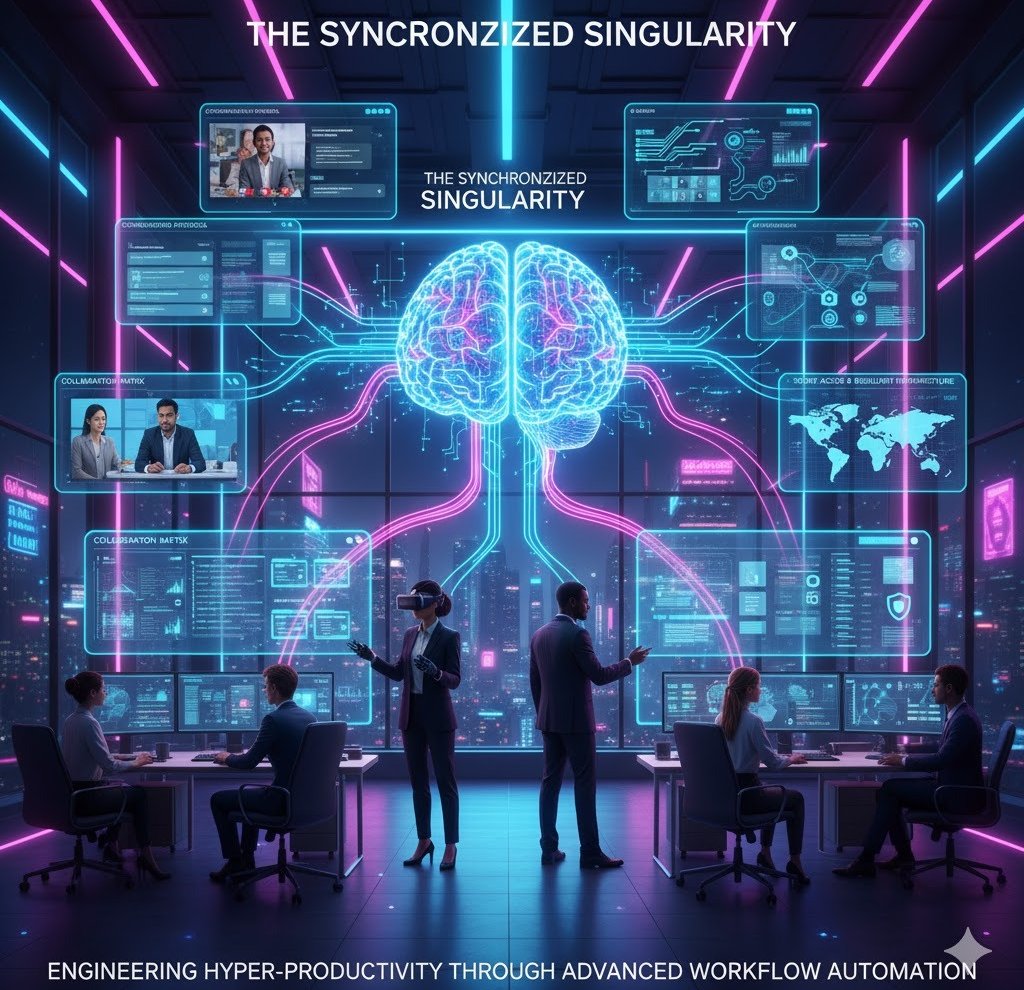The Future of Work is Flexible: Building a Seamless Hybrid Tech Stack
Mr. Diyan Ahmed
10/7/20253 min read


SEO Idea: A guide for business leaders on creating a robust and effective technology stack for a hybrid workplace. This post will detail the essential tools for seamless communication, collaboration, and productivity, ensuring teams can thrive whether they are in the office or working remotely.
SEO Keywords: remote work technology, hybrid workplace tools, collaboration software, remote productivity, digital communication, future of work, hybrid tech stack, cloud computing, project management tools, virtual office.
The way we work has fundamentally changed. The rigid, five-day-a-week office model is becoming a thing of the past as more businesses embrace a hybrid work model. This flexible approach—which combines in-office and remote work—offers a host of benefits, from increased employee satisfaction to a wider talent pool. But for a hybrid model to truly succeed, it needs a strong foundation: a seamless hybrid tech stack.
Building this stack isn't just about buying a few new apps; it's about creating a unified digital ecosystem that ensures every team member stays connected, productive, and engaged, no matter their location.
Essential Pillars of Your Hybrid Tech Stack
A great tech stack for the future of work must address three core needs: communication, collaboration, and access.
1. Communication: Bridging the Digital Divide 🗣️
Clear and consistent digital communication is the lifeblood of a hybrid team. You need tools that can facilitate both real-time, spontaneous conversations and asynchronous updates.
Instant Messaging & Team Chat: Platforms like Slack or Microsoft Teams serve as the "virtual office headquarters." They allow for quick, direct messaging, organized conversations in channels (for projects or departments), and easy file sharing. This reduces email clutter and enables a more fluid exchange of information.
Video Conferencing: For face-to-face meetings, tools like Zoom or Google Meet are non-negotiable. They are essential for team check-ins, client meetings, and all-hands gatherings. Features like screen sharing and virtual whiteboards can help replicate the in-person collaboration experience.
2. Collaboration: Working as One, Anywhere 🤝
A truly productive hybrid team needs to work on projects together effortlessly, even when physically apart. This requires tools that break down silos and enable collective work.
Cloud-Based Collaboration Software: The days of sending around a document with multiple versions are over. Platforms like Google Workspace or Microsoft 365 allow for real-time collaboration on documents, spreadsheets, and presentations. Everyone is literally on the same page, with changes saved automatically to the cloud.
Project Management Tools: How do you keep projects on track when some team members are at home and others are in the office? Collaboration software like Asana, Trello, or Monday.com provides a centralized, transparent space to assign tasks, set deadlines, and track progress. Everyone has visibility into who is doing what and by when, which is crucial for remote productivity.
Digital Whiteboards: For brainstorming and creative sessions, tools like Miro or Mural offer a virtual space where teams can visually organize ideas, create flowcharts, and sticky-note brainstorms just as they would in a physical meeting room.
3. Access and Security: The Foundation of Flexibility 🔐
For a hybrid model to be secure and reliable, employees need consistent, safe access to the resources they need.
Cloud Computing: Your entire hybrid tech stack should be cloud-based. This allows employees to access their files and applications from any device, anywhere, with an internet connection. It is the backbone of a flexible work model.
Cybersecurity Tools: With employees accessing company data from different locations and networks, security is paramount. A robust security strategy includes multi-factor authentication (MFA) on all critical accounts, a company-wide VPN (Virtual Private Network) for secure remote access, and a strong policy on data protection.
Conclusion: Designing Your Tech for a Better Tomorrow
The future of work is flexible, but its success hinges on the technology that supports it. By thoughtfully selecting and integrating hybrid workplace tools for communication, collaboration, and security, you can build a seamless, productive, and inclusive environment. This not only empowers your employees to do their best work, but it also prepares your business to thrive in a world where flexibility and adaptability are the ultimate competitive advantage
Connect
Partnering for innovation across industries.
Explore
Discover
+923001534092
© 2025. All rights reserved.
